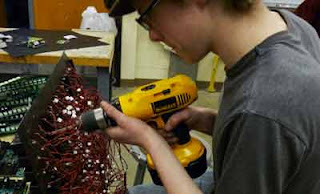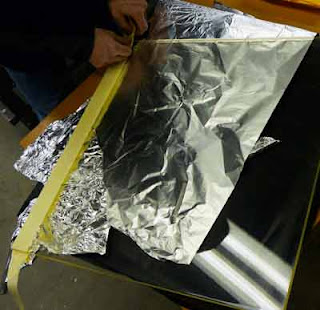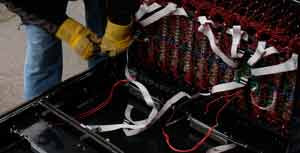
After Laurel gave us the old Bellevue College Reader board, Brian hauled it over to the shop. The board is an assemblage of several sections with many LEDs wired into each section, so the whole componentry has literally hundreds of individually wired LEDs. It took a couple of hours -- mostly in the rain -- to disassemble all of the components.
After the first pieces of the board were dismantled, the components were brought into the lab for experimentation. Circuitry and power were re-established and the system was hooked up to a 120 outlet....
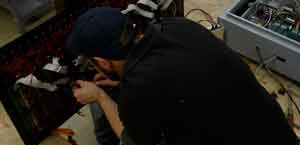
We were happily surprised (and at first, puzzled) when the pieces of the board Brian had hooked up began cycling through a startup loop that included time and temperature. Since only part of the board was hooked up, the array of lights represented only part of the message. So it took a minute for the message to sink in.

Edgar did an experiment by stripping the connector from an individual LED and connecting the LED's paired red and black wires to a speaker input on the lab stereo system. Then he turned on the stereo. Pulses of light accompanied the rock music that ensued.

"T_e T_me i_ n_w . . . " or
"T_e T_mp_r__ure i_ n_w . . . " ?
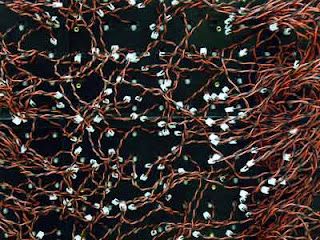 It's all about disassembly and the generation of ideas, lots of ideas.
It's all about disassembly and the generation of ideas, lots of ideas.